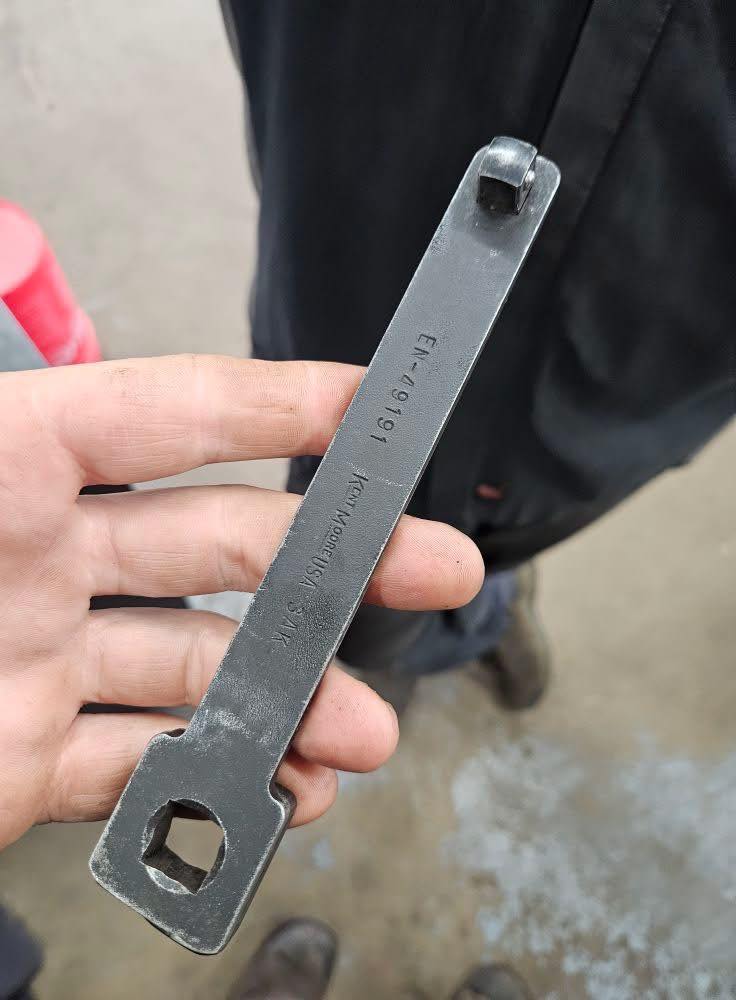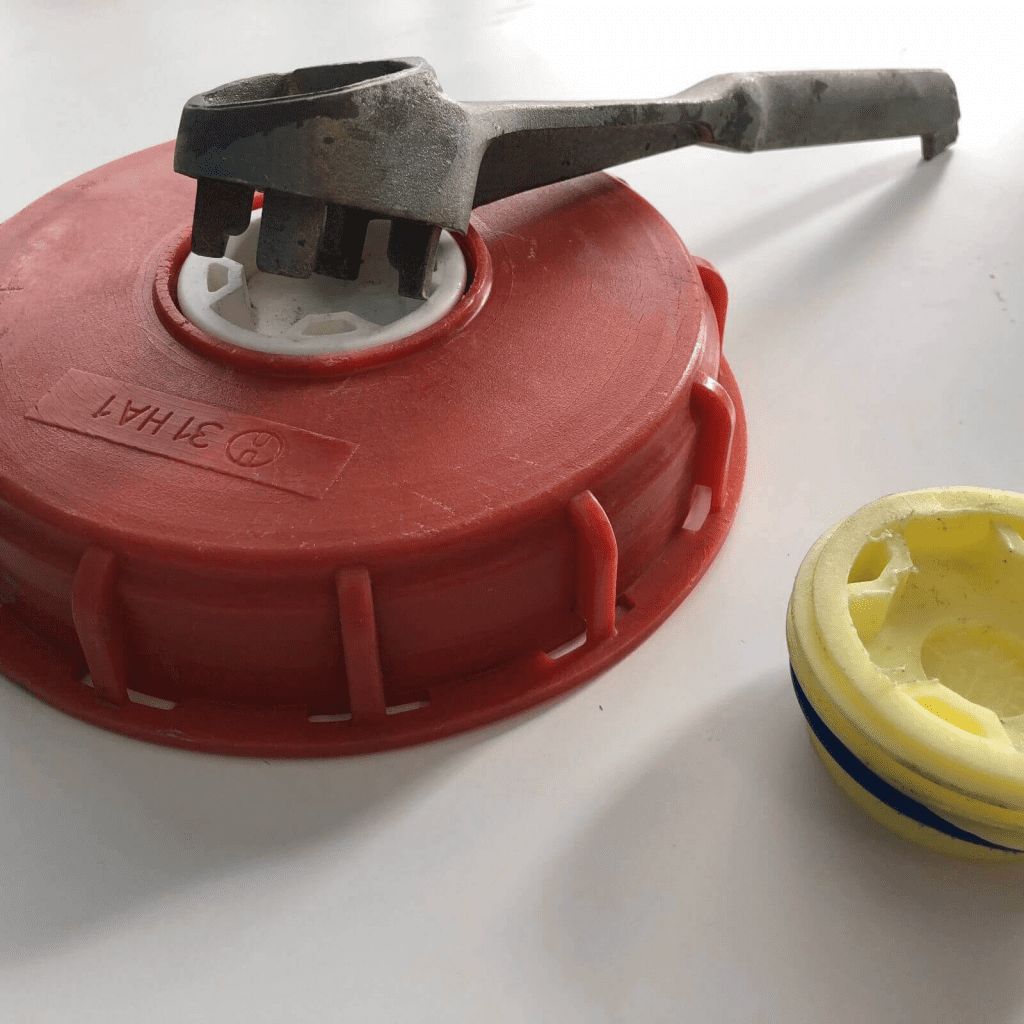The Hidden Key to Industry’s Golden Era
Some tools whisper stories only mechanics, engineers, or old refinery workers can truly understand. To most, it looks like a simple piece of forged metal. But to those familiar with the industrial heartbeat of the 20th century, this solid piece of steel was a lifeline — a small, powerful tool that once opened the gateways to oil, chemicals, and fuel reserves around the world.
The Unsung Hero: The Drum Bung Wrench
This isn’t just any wrench. It’s a drum bung wrench — or as some old-timers called it, the fuel drum key. Back when 200-liter steel drums ruled the oil fields and chemical depots, this compact tool was essential. Its job? To open and seal the metal caps, or bungs, that kept valuable liquids safely stored inside those heavy-duty drums.

Every mechanic, fuel handler, and maintenance crew member had one hanging from their belt or toolbox. Without it, you weren’t getting anywhere near the contents of a fuel drum — at least, not without a struggle.
Design with Purpose
At first glance, it’s straightforward — a flat steel handle with different ends. But every part of it was designed with intention. One end features a square or hexagonal socket that fits snugly over the bung plugs found on industrial drums, typically ¾ inch or 2 inches in size. This precision fit allowed workers to apply maximum torque without stripping or damaging the cap.
The opposite end tells another story: a raised lug designed for prying or breaking metal seals, often used on military or chemical storage drums. It’s a detail that reveals how this wasn’t just a tool — it was a symbol of control in environments where safety, strength, and precision mattered most.
Built to Endure
Made from thick, heat-treated steel, tools like this one could take decades of abuse. Some were painted black, others coated with anti-corrosion finishes to survive harsh environments — from oil rigs to naval bases.
Video : Tri-Sure Aluminum Drum Wrench – 26WTAW | The Cary Company
This particular wrench, stamped with “EN 4991 – KOTI MADE USA SAK,” hints at American industrial roots. While the “EN” might suggest a European standard, in this case, it’s more likely an internal manufacturing code. The “KOTI” marking suggests a smaller U.S. foundry or toolmaker, possibly one that served the petroleum or transport sectors during the mid-20th century.
A Glimpse into Its World
Picture a dusty airbase in the 1960s. Rows of metal drums sit beside roaring aircraft, filled with jet fuel. Mechanics rush between operations, and before each refuel, someone reaches for this wrench — small, sturdy, and always dependable. A single twist of the wrist, a solid metallic clink, and the drum opens to release the lifeblood of machinery: fuel.
In chemical factories, it was just as vital. Workers used it to unseal barrels of solvents, lubricants, and cleaning agents. Its compact form meant it fit neatly into tool rolls and could handle repeated, forceful use without bending.
Precision and Safety: Why It Mattered
Using the wrong tool to open a drum could mean leaks, spills, or worse — sparks near flammable substances. The drum bung wrench solved that. Its snug-fitting design minimized slippage, reducing the risk of accidents. It gave workers control in environments where even a small mistake could have serious consequences.
In a way, this humble tool was a safety measure as much as it was a key — protecting workers, preserving materials, and ensuring operations ran smoothly.

An Artifact of the Industrial Age
Today, tools like these have largely faded into history. Modern industries use pneumatic or digital systems for drum handling, and the simple hand-forged wrenches are now seen as collector’s pieces. Yet they carry immense historical value. Each one represents a time when craftsmanship and practicality defined industry.
Collectors and industrial historians prize them not just for their function, but for what they represent — an era of manual labor, ingenuity, and mechanical artistry. Finding one stamped “Made in USA” with clear lettering still intact is like holding a piece of that industrial legacy in your hand.
The Maker’s Mark: A Clue to Its Origins
“KOTI MADE USA” — short, proud, and direct. While little documentation exists about the KOTI brand today, its presence on industrial tools from the mid-1900s suggests a specialized manufacturer that produced equipment for fuel depots or defense operations. The combination of “EN 4991” and “SAK” likely denotes a production batch or contract identifier, possibly for military supply chains.
These details matter. They tell us that this wasn’t a generic wrench — it was engineered for reliability under strict industrial or military standards. Every stamped number, every corner of its forged design speaks to the precision of the time.
Video : Universal Drum Wrench – 26WSDW | The Cary Company
Holding a Piece of History
When you hold one of these wrenches, you’re not just holding metal — you’re touching the spirit of an era when tools were made to last lifetimes. You can almost feel the grit of factory floors, hear the clang of oil drums, and imagine the countless hands that turned this same tool to fuel the world’s progress.
It’s more than an object; it’s a memory forged in steel. A reminder that even the simplest tools once played essential roles in keeping civilization running.
Conclusion: The Power in Simplicity
In today’s age of automation and disposable gadgets, the drum bung wrench stands as a quiet testament to endurance, simplicity, and purpose. It’s a relic from a world that valued toughness and precision — where a single tool could open the doors to industry, energy, and innovation.
If you recognized it at first glance, congratulations. You have the eyes of someone who sees beyond the surface — someone who understands that even the smallest, most unassuming piece of metal can hold the weight of history itself.